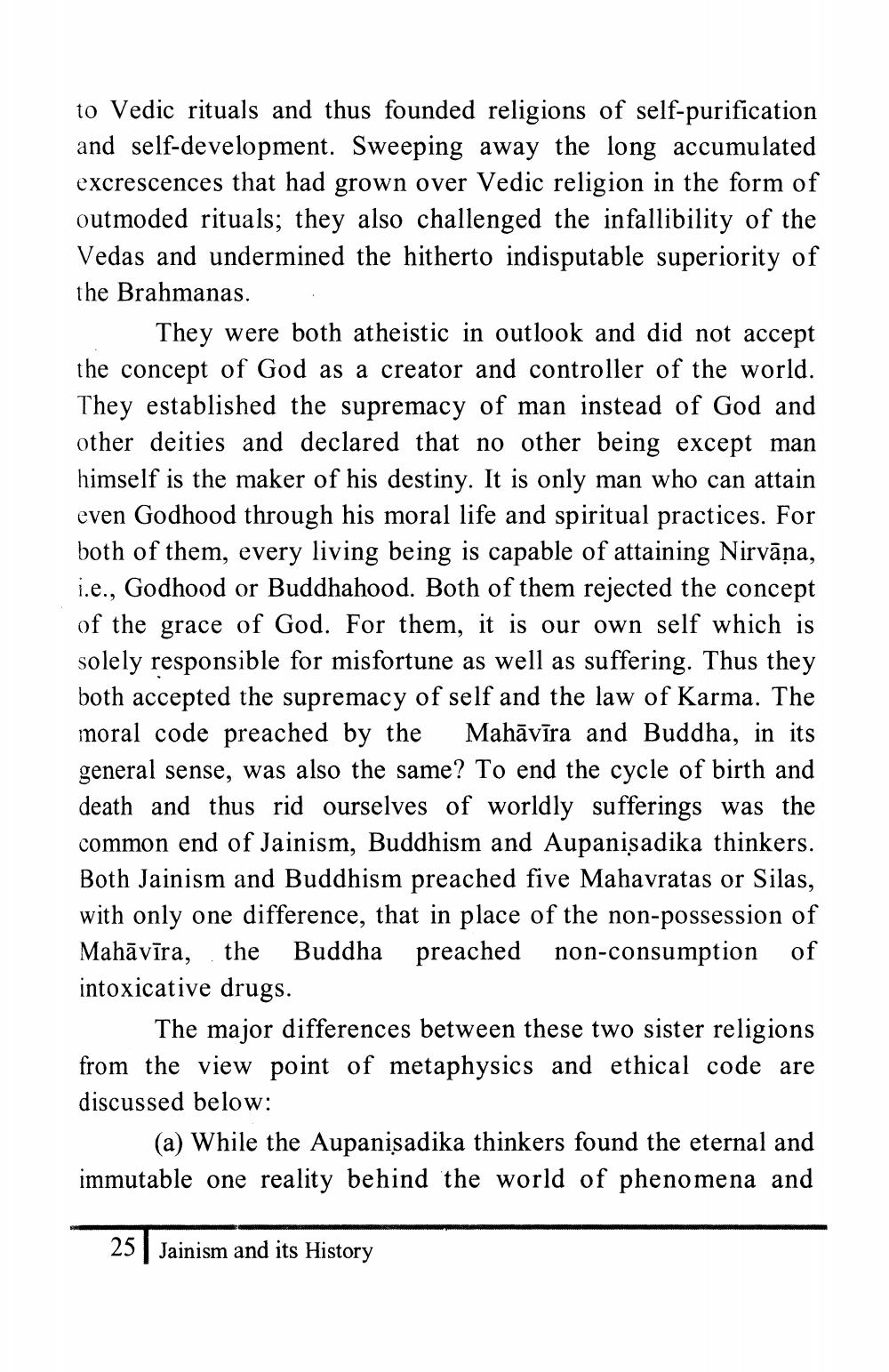________________
to Vedic rituals and thus founded religions of self-purification and self-development. Sweeping away the long accumulated excrescences that had grown over Vedic religion in the form of outmoded rituals; they also challenged the infallibility of the Vedas and undermined the hitherto indisputable superiority of the Brahmanas.
They were both atheistic in outlook and did not accept the concept of God as a creator and controller of the world. They established the supremacy of man instead of God and other deities and declared that no other being except man himself is the maker of his destiny. It is only man who can attain even Godhood through his moral life and spiritual practices. For both of them, every living being is capable of attaining Nirvāṇa, i.e., Godhood or Buddhahood. Both of them rejected the concept of the grace of God. For them, it is our own self which is solely responsible for misfortune as well as suffering. Thus they both accepted the supremacy of self and the law of Karma. The moral code preached by the Mahāvīra and Buddha, in its general sense, was also the same? To end the cycle of birth and death and thus rid ourselves of worldly sufferings was the common end of Jainism, Buddhism and Aupanisadika thinkers. Both Jainism and Buddhism preached five Mahavratas or Silas, with only one difference, that in place of the non-possession of Mahāvīra, the Buddha preached non-consumption of intoxicative drugs.
The major differences between these two sister religions from the view point of metaphysics and ethical code are discussed below:
(a) While the Aupanisadika thinkers found the eternal and immutable one reality behind the world of phenomena and
25
Jainism and its History




